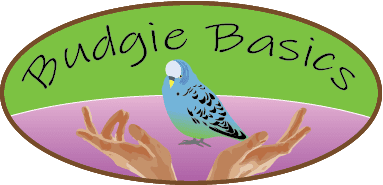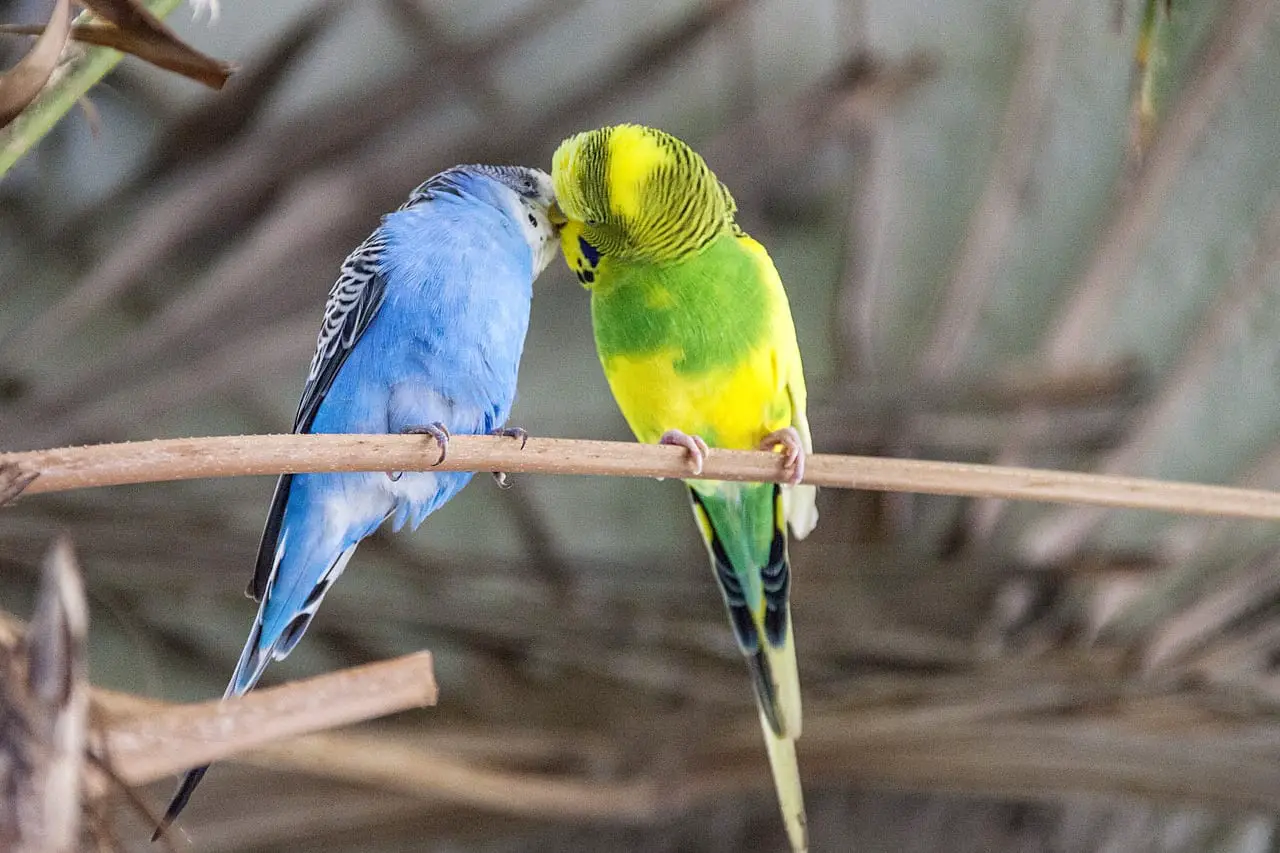Table of Contents
One of the joys of keeping budgies is breeding them. That excitement and anticipation that comes from seeing the varieties (mutations) that produced by different pairings. Based on my own experiences budgies can be temperamental when it comes to pairing, here is my best advice on how to encourage your budgies to breed.
When putting budgies down to breed, to ensure healthy, happy parents and chicks, there are several factors you must consider. The first consideration is the setup, how and where do you intend to breed the birds?
You will need to decide, are your budgies breeding in an aviary, indoor or outdoor colony breeding, or shall it be in individual breeding cages carefully selecting the pairs you think will produce the best offspring?
There is no right or wrong setup, each has its own benefits and drawbacks. Let’s explore the difference a little more, then you can decide what setup will be most suited to your breeding goals.
Flight Breeding
With regards to the first consideration, we must be aware of a few things when we colony breed in a flight cage or flight aviary, often just referred to by breeders as a “Flight”.
If the flight is outdoors we must be mindful of the weather conditions. For instance, I am in the United Kingdom and it can be quite cold even during the day. And although our feathered friends are a hardy wee species their chicks and eggs can be quite vulnerable to low temperatures.
Breeding Budgies in Outdoor Flight Cages
An additional consideration for outdoor breeding in a flight must be “night fright”. Night fright is exactly what it sounds like, it’s when the birds for whatever reason become spooked. When this happens they will jump from their roosting place, this can be caused by a loud noise, or something hitting the outdoor aviary.
Its common practice for breeders to leave a night light on which allows hens that are startled to return to the nest box. These lights are usually red and a lower wattage to your normal lighting, in an outdoor flight this may be problematic especially in built-up areas.
Large timber flight cages designed for pigeons, like the one pictured below are an easy option. they just need a few modifications to the nesting boxes so they are more suited to budgies. I like them because they tend to offer more protection from the elements than wire cages.
Wire cages are fantastic but you will want to have a heavy duty covering over them in cold climates. You can use a plastic tarpaulin, but they will flap in the wind, and breakdown over time, one cheap solution is to fix caravan roofing rubber to the top of the cage.
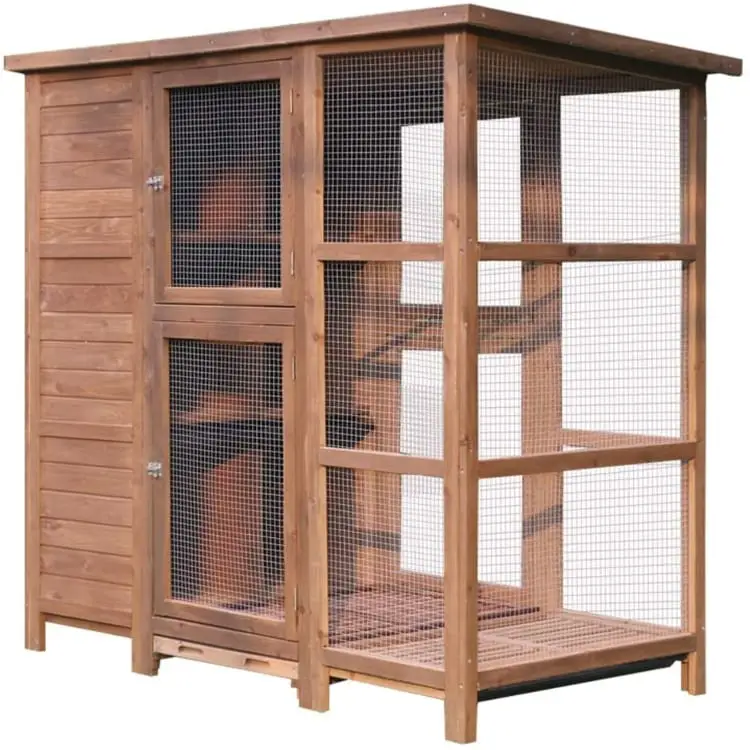

Timber framed outdoor flight cages are a good budget option and will last for a long time, they also offer more protection from the elements than wire cages.
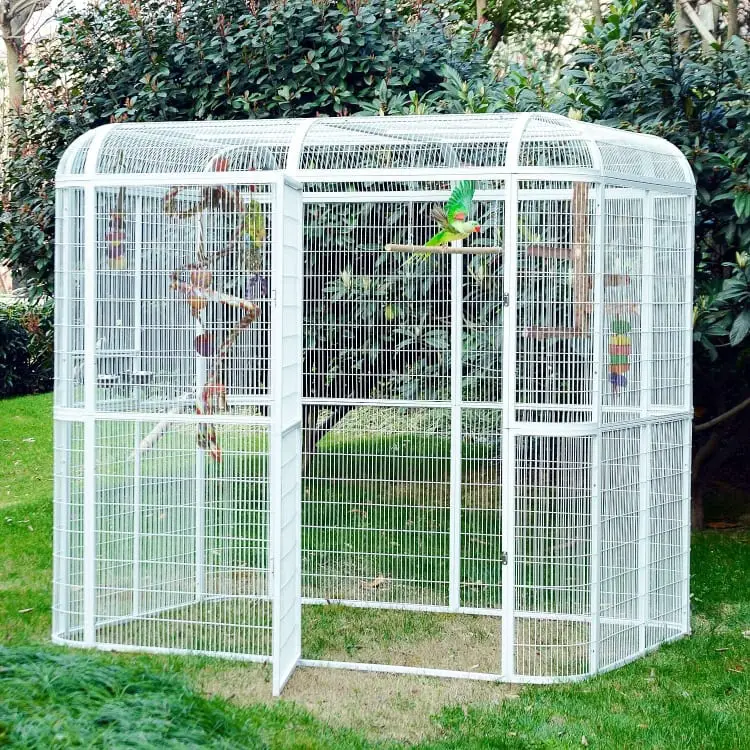

Large wire outdoor flights are perfect for those in more temperate climates, they offer the closest thing to being outdoors without investing thousands in a custom aviary setup.
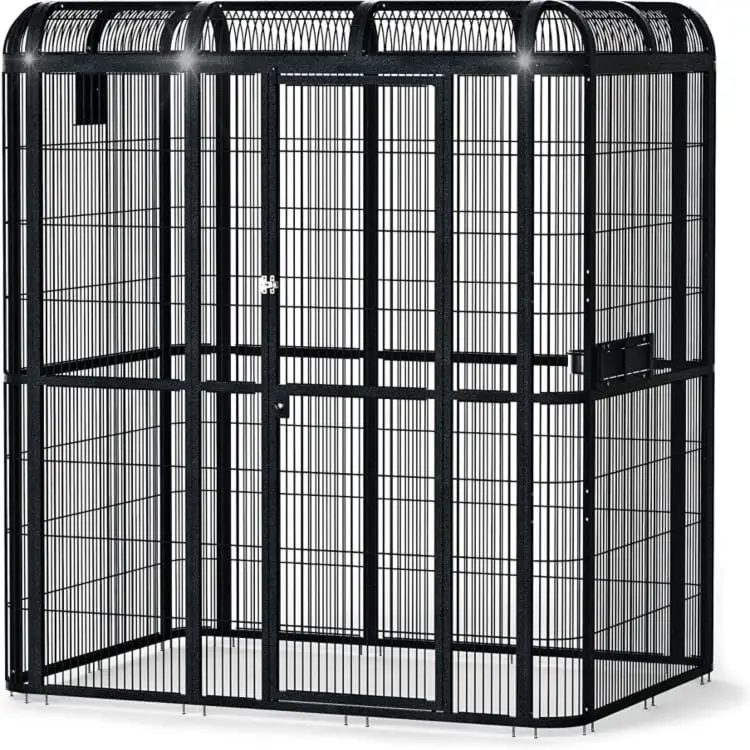

This small walk in aviary flight cage is the rolls royce of budgie cages, heavy galvanised steel made to last a lifetime, it is robust enough to keep your budgies safe from most predators.
In conclusion, Flight cages are brilliant for keeping budgie flocks in. However personally, I would not choose to breed in an outdoor flight, because the risk factors are stacked against this being a successful breeding scenario.
Breeding Budgies in Indoor Flight Cages
In my opinion, if you want to use the colony flight breeding method then indoor flight breeding is preferred. An indoor flight can be temperature regulated and adequately illuminated of an evening. This would alleviate any issues regarding cold and night fright. If during the night the birds get scared off the nest for any reason, they can see enough to get themselves back to their chicks or eggs.
Below is a custom-built indoor flight cage that I personally use, but you do not need something this big, in my opinion, A large indoor flight cage with at least two sections is more than adequate for most home budgie breeders. Something like the Hampton Deluxe Divided Breeder Cage is perfect for the home breeder or hobbyist.
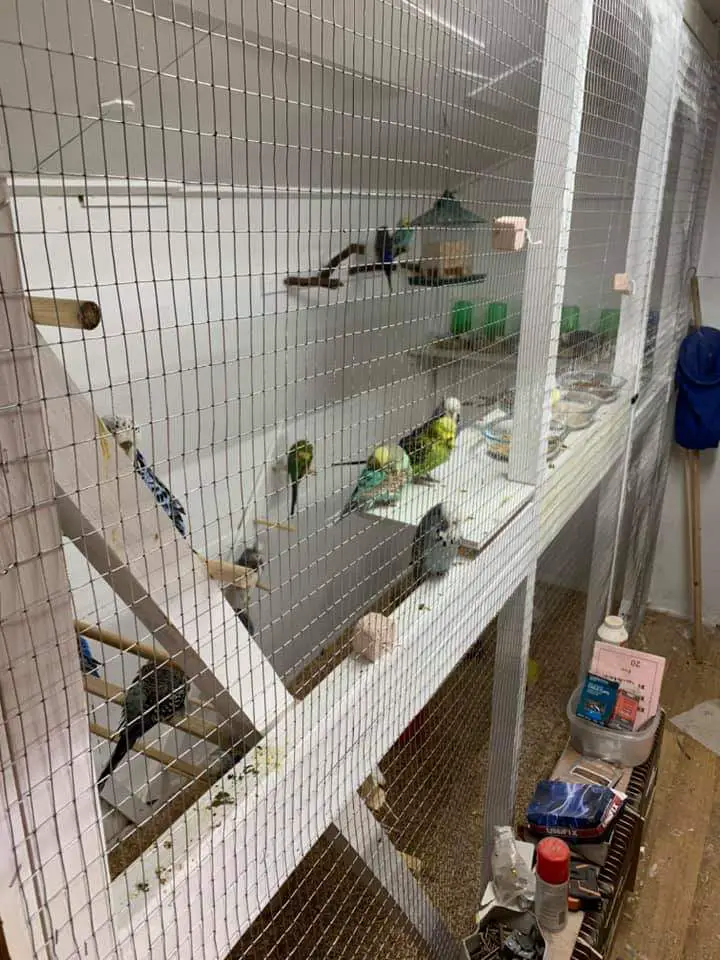

Breeding Budgies in Cages
The most controlled way to breed exhibition type budgies is to use adequately sized breeding cages. These take many forms, from all metal wire cages to wooden ones with cage fronts. Some have the nest boxes built into the cage and some with it on the outside of the cage.
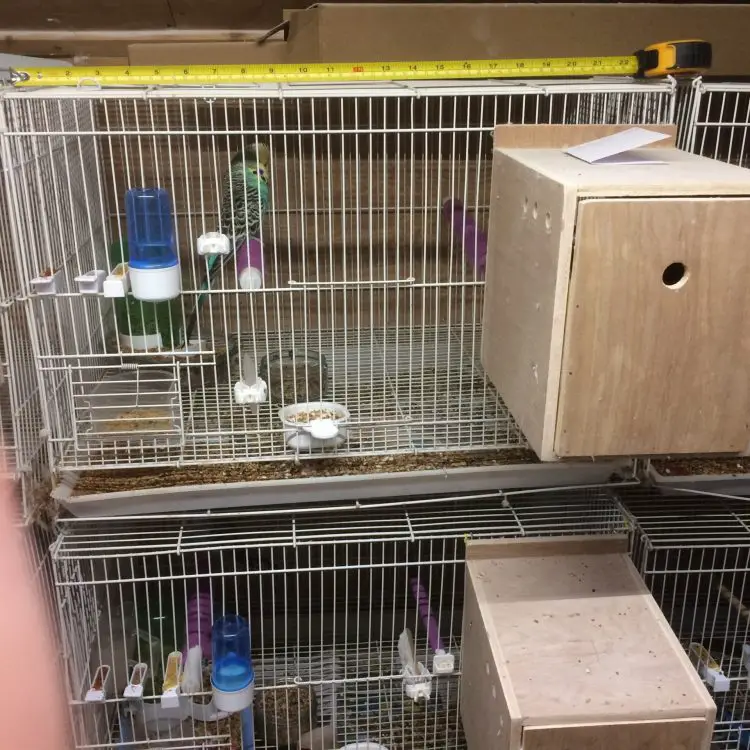

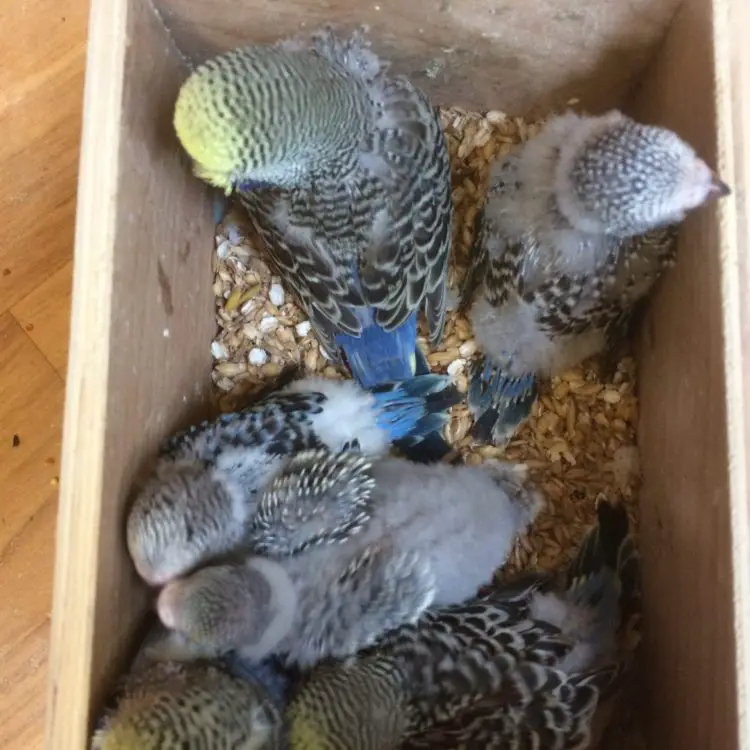

Determining the Best Breeding Age
After you have decided on where you would like to house your birds during the breeding season, your next consideration should be the age of the birds typically birds are old enough and can be encouraged to breed at around six months old.
This may vary slightly from bird to bird, but typically a hen can breed from six months onwards up to around age 3-4. Cock birds can breed for slightly longer up to around 4-5 years.
Several factors determine how long you can breed a budgie for. Factors such as diet, how often they have they been bred, how many clutches (groups of chicks) they have had and the size of these clutches. As well as how well the parents share parenting tasks. If you care for your budgies they can be successfully bred for many years.
Dietary Supplements to Assist Breeding
So you have picked the location and decided that the pairs are old enough now you should consider their diet. Although your birds have been thriving on their diet outside of the breeding season, their nutrient requirements change when they are going to breed. So we must consider a couple of additional things.
Firstly the hens are going to be producing eggs, these eggs are made mostly of calcium carbonate this means that the hens own calcium levels will have to be supplemented. This can be done by adding additional sources of calcium to the bird’s diet on the lead up to pairing.
Secondly, both the cock and the hen will at various stages of the breeding process have to feed youngsters, the cock also must feed the hen at various times too. Therefore, increasing the bird’s food quantity and variety can ease the burden on the parents.
Some breeders at this point introduce supplements to their bird’s diets, these can consist of dry forms of minerals, fresh organic vegetables or rehydrated vegetables, sprouted seeds and in some cases, breeders also introduce mealworms dried or fresh.
Ensuring that both the cock and hen bird have a good food supply will help to encourage your budgies to breed.
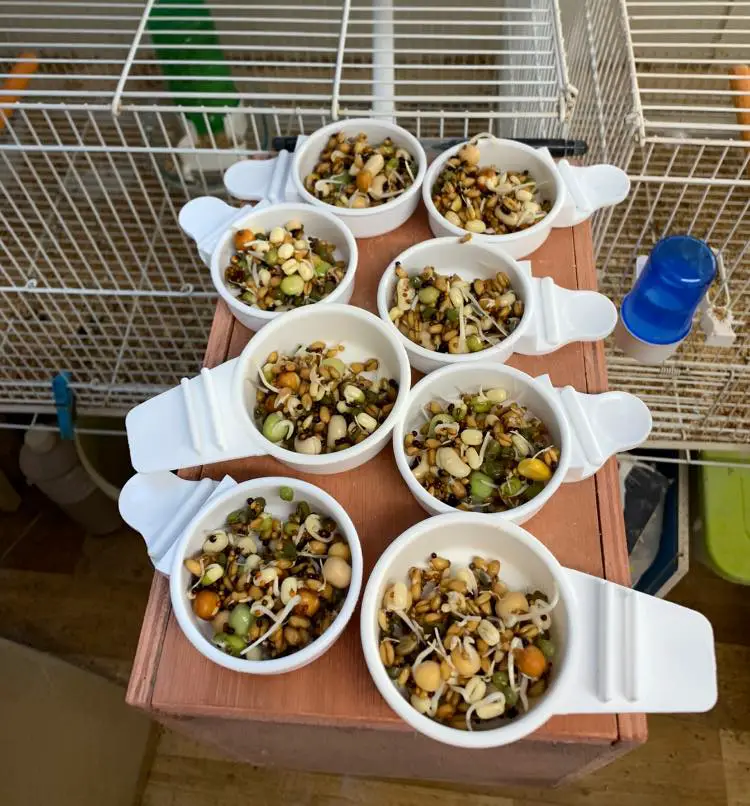

A quick note on sprouted grains. In the wild budgies will breed after rainfall, this is because the dry arid environment they live in springs to life quickly after rain, providing them with plenty of food to feed their young.It is my opinion that introducing sprouted seeds mimics the diet a wild budgie would be getting directly after rain. And that is why I believe it helps encourage your budgies to breed.
If you are interested in sprouting your own grains, then check out the post I wrote on how to prepare sprouted seed for budgies.
Whatever method you use, it is fundamental that you consider your bird’s wellbeing and take into consideration that breeding can be taxing on the parents physically. As such their diets should be supplemented accordingly.
Further, by supplementing the parent birds diets, it will also mean your young budgie chicks are getting the best start to life.
Ensure Your Budgies are Fit Enough to Breed
Before encouraging your budgies to breed, also consider are your birds fit enough to breed? The easiest way to ensure your birds stay fit is to house them in a flight, putting the food at one location within the aviary and the perching places at the opposite end.
Also whilst in the aviary, the birds can be stimulated with natural branches and parrot toys etc. for them to play with (see insert pic) this ensures the bird’s activity levels are kept to the highest allowing them to increase their fitness.
Remember a birds fitness is not just a physical thing its also a mental thing, that is why it is so important to have stimulation in the flight.
Having now selected the best location, chosen birds of the right age, ensuring they have adequately supplemented diets, and being confident your birds appear fit and healthy with high activity levels high, you can now start the pairing process.
usually at this stage in a mixed aviary the birds will self-select and pick the partner they prefer, just as they would in the wild. However, as breeders, and especially exhibition breeders we may have a breeding program in mind and wish to breed certain lines together.
We are looking for certain positive family traits to try to keep or strengthen in the next brood. Or sometimes we are trying to abolish “breed out” negative family traits from a bird you want to improve.
Stimulation and Pre-Pairing Routine
It is easy at this stage to think that you have ticked all the boxes with regards to a supplemented diet, birds of the correct age and the birds themselves seem fit enough. But it is at this point that many breeders fall foul, and you may do the same if you are not careful.


Often even with all the preparation done, your birds just won’t be interested in breeding. This can be very frustrating, but don’t worry there are still a few tricks you can use to encourage your budgies to breed. You can further encourage your budgies to breed in several ways.
Firstly if you’ve had the pairs in a mixed aviary separate your chosen cocks and put them into their own individual breeding cages. Ensure that you keep up the additional supplements and additives to their diets.
Additional Medication and Care
Additionally, at this point, I take the opportunity to give them a dose of Ivermectin to prevent and kill any parasites or mites they may have. I also trim their vents, or also referred to scientifically as their cloaca. the area where they pee, poop, and lay eggs.
Very buffy feathered birds can have a lot of lengthy feathers especially around their vents, not trimming this can hinder copulation and may lead to clear eggs.
It is also at this point I start to fill out the breeding record card with the bird colour, type and ring number.
Breeding Pair Separation
Once you have selected your desired cocks and the hens you intend to pair them with, remove any remaining spare cock birds away from the hens. This will stop the undesired cocks from pairing up with the hens whilst their desired cock birds are in the breeding cages.
Now you can bring the hens further into condition by adding in natural tree branches such as apple tree or willow, ensuring that any wild tree branch has not been treated with any chemicals etc. and that the tree itself is not harmful to the birds.
In addition to this you can also add cardboard boxes to the floor of the flights, I cut holes in mine on several sides. All this stimulates the hens to gnaw additional holes in the boxes and the stripping of the bark from the branches also helps with this process.
Be careful to keep a watchful eye on the hens and be sure to remove the boxes before evening, the last thing you want is for the hens to start to fight over a particular box and get injured just before you put her in with her desired mate.
Pairing Your Budgies
After about a week your cocks will be or should be bouncing sitting chittering to the perch they may even be facing each other if your breeding cages are wired and they can see each other chatting away. The hens too at this stage should all be ready to be placed together with the cock bird you want to breed them with.
At this point remove the hen trim her vent give her a dose of Ivermectin also and record her number on the breeding card, the purpose of doing all this in advance is, the last thing you want to do whilst your birds are breeding is to disturb them.
Some breeders birds don’t mind being handled but I can assure you when they have eggs or young especially the hens, their temperament can change, so it is best not to handle them during breeding.
Breeding Pair Introduction
The instant you introduce the cock and hen you should see a reaction, the cock bird should pursue the hen with vigour attempting to almost head butt her until she accepts his advances. This usually does not take long. Once you see the cock successfully feed the hen congratulations, you know mating is not too far away! All your hard work to encourage your budgies to breed should soon pay off.
You should leave them for a week and on the 8th day introduce a breeding box to the cage and see the reaction of the hen, keep the entrance closed off to her for another day or so.
Some breeders put an additional piece of cardboard over the hole and allow the hen to gain entry herself, again this is just added stimulation that can be another tool for encouraging your budgies to breed successfully, so try adding it into the mating process.
Hopefully, after a short period of time, you have been successful in getting your budgies to breed and eggs will appear. The hens will sit and they will rear a successful clutch and you will have the desired show birds you where hoping for when you made your pair selection at the initial stages.
So there you have it, my complete guide on how to encourage your budgies to breed. I hope you have success. If you would like to ask further questions about how to encourage your budgies to breed, head over to facebook.com/budgiebasics you can also share your success pictures there.
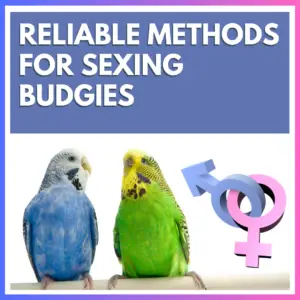

Reliable Methods for Sexing Budgies and Parakeets: Exploring Visual Inspection, Behavioral Differences, and DNA Testing
Introduction Welcome to the exciting world of breeding budgies! As you embark on this fun and addictive hobby, one of the most important skills you’ll need to master is how to determine the sex of a newborn chick. Don’t worry, with a bit of knowledge and practice, you’ll be a pro in no time! In


The Best Air Humidifiers for Budgies & Parrots
What are the best humidifiers for budgies our top 3 choices! ASAKUKI My number one pick for the best humidifier for budgies is the ASKUKI ultrasonic humidifier. I love this model because it is super quiet, and has a transparent reservoir making it easy for you to see when the water level gets low. The


Why Budgies Make Awesome Pets for Stress Relief?
Budgies are wonderful pets for those who suffer from stress. They can provide you with a safe and secure environment to unwind, and release your anxiety. They are highly intelligent, as well as being very playful and friendly
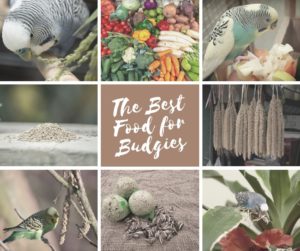

The Best Food for Budgies: Bird Seed, Fruit, Vegetables, and More
What are some of the best foods for budgies? To prevent your budgies from nutrient deficiencies they should be fed a varied diet that consists of pellets, fruits, vegetables, and even nuts. Some common types of seeds are offered in parakeet blends or can be bought separately for budgies and other small/medium birds. Buying your
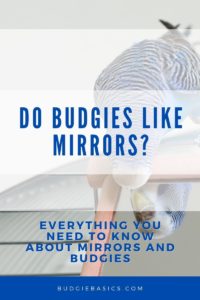

Do budgies like mirrors? Everything you need to know about mirrors and budgies
Budgies are known for being very curious, intelligent birds. To find out whether or not your budgie likes mirrors read on to learn when you should, or shouldn’t use a mirror in your budgie’s cage.


Is Budgie Breeding an Expensive Hobby?
Introduction Budgies, or budgerigars, are one of the parakeet species that are native to Australia and can be found naturally in flocks in the open woodlands, grasslands and scrublands down under. Wild budgies are slightly smaller in size when compared to their domesticated relations, and their predominant colour is green while captive birds range from
